Y5 Looking at the Features of Fables
£3.00
KS2 National Curriculum:
✓ Recognising common structural elements of fables
✓ Exploring animals as character types and moral messengers
✓ Writing a leaflet explaining fable features
✓ Analysing how language conveys a warning message
Activities in this lesson include learning about the features of fables including their purpose in detail, answering higher and lower order questions on the features of fables, reading the text of The Fox and the Crow, designing a leaflet warning all other animals to beware of the crafty fox and completing a true/false exercise that includes all the features of a fable.
There is a five-minute evidence-based CPD activity at the end of this lesson which will develop classroom teachers’ skill set. This CPD consists of a research extract on self-assessment with a five-minute activity based on this extract.
Description
Recommended Year Group: Year 5
Focus: Identifying structure and language of fables
Skills Developed:
• Recognising common structural elements of fables
• Exploring animals as character types and moral messengers
• Writing a leaflet explaining fable features
• Analysing how language conveys a warning message
📘 National Curriculum Links:
• Reading – Comprehension: Recognise structural and thematic patterns
• Writing – Composition: Write a structured explanatory leaflet
• Grammar: Use of third person, past tense, and sentence clarity
• Thinking and Learning: Self-regulation, structured explanation
These evidence-based learning (EBL) lessons are based on classroom practice that has been proven, by research, to maximise thinking, learning and attainment. From an extensive review of educational research, we identified the eight key classroom thinking and learning skills that were common across these research papers. We named these eight key skills “EBL skills”.
EBL skills have been proven by research to maximise learning because they combine the most productive thinking skills with the most effective learning behaviours. Each of our evidence-based learning lessons uses the English curriculum as a framework through which the eight EBL skills are delivered.
Teachers also have the opportunity to add to their own skill set or refresh their existing skills with our five-minute CPD activity, based on one of the EBL skills used in this lesson.
The skills in bold below are the EBL skills developed in this Fables lesson. Click on each skill to learn more about that skill.
- Collaboration
- Thinking Skills
- Peer Assessment
- Peer Teaching
- Self-Assessment
- Metacognition
- Self-Regulation
- Independent Learning
1 review for Y5 Looking at the Features of Fables
Only logged in customers who have purchased this product may leave a review.
Related products
-
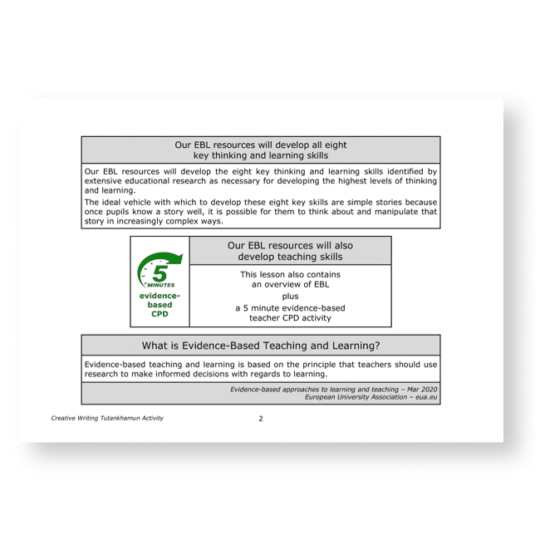
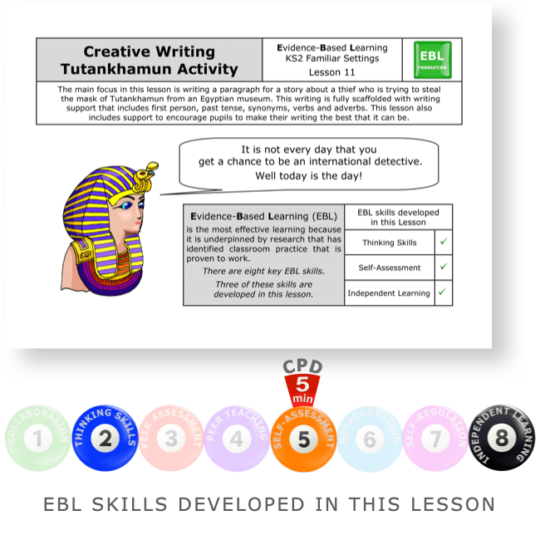
Creative Writing Tutankhamum Activity
£3.00 Add to basket £3.00Add to basket
£3.00Add to basketThe main focus in this lesson is writing a paragraph for a story about a thief who is trying to steal the mask of Tutankhamun from an Egyptian museum. This writing is fully scaffolded with writing support that includes first person, past tense, synonyms, verbs and adverbs. This lesson also includes support to encourage pupils to make their writing the best that it can be.
There is a five-minute evidence-based CPD activity at the end of this lesson which will develop classroom teachers’ skill set. This CPD consists of a research extract on self-assessment with a five-minute activity based on this extract.
VIEW -


Y5 Rabbit Holes and Wardrobes
£3.00 Add to basket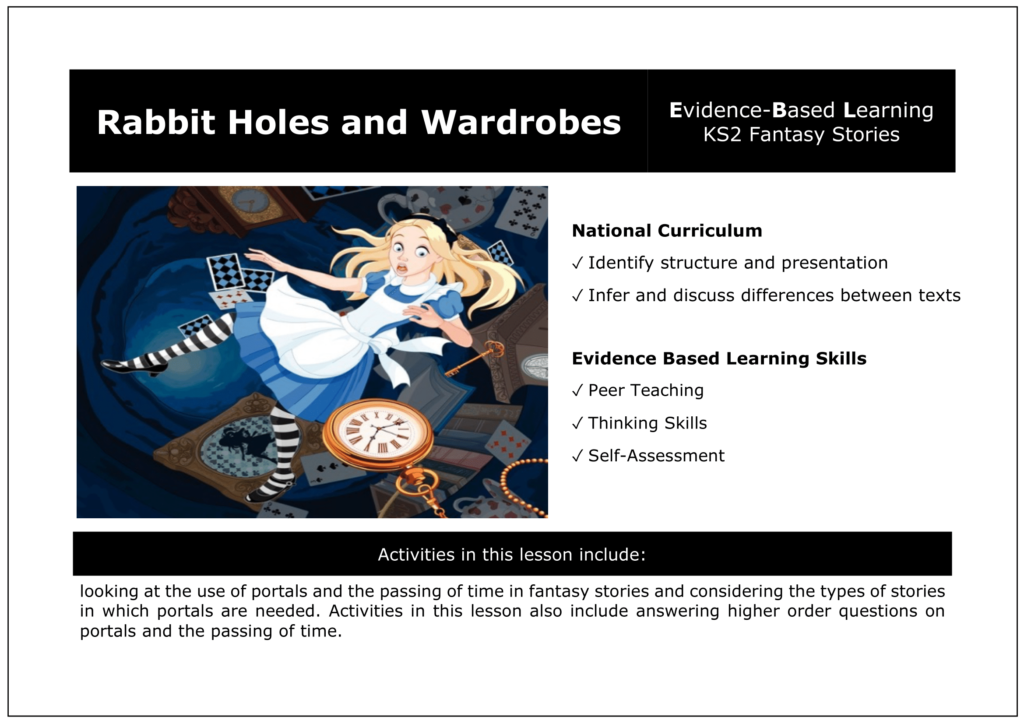 £3.00Add to basket
£3.00Add to basketKS2 National Curriculum:
✓ Identify structure and presentation
✓ Infer and discuss differences between textsActivities in this lesson include looking at the use of portals and the passing of time in fantasy stories and considering the types of stories in which portals are needed. Activities in this lesson also include answering higher order questions on portals and the passing of time.
There is a five-minute evidence-based CPD activity at the end of this lesson which will develop classroom teachers’ skill set. This CPD consists of a research extract on self-assessment with a five-minute activity based on this extract.
VIEW -


Y5 Shifting Settings
£3.00 Add to basket £3.00Add to basket
£3.00Add to basketKS2 National Curriculum:
✓ Exploring narrative changes in location, time, and mood
✓ Writing connected events showing setting shifts
✓ Using cohesive devices to link paragraphs
✓ Peer evaluation using success criteriaThis lesson looks in detail at the four main reasons why the setting in a story can change: the action in the story moves to a different setting, the characters in the story move to a different setting, the setting stays the same but the time of day changes and the setting stays the same but the weather changes. Activities include answering higher and lower order questions.
There is a five-minute evidence-based CPD activity at the end of this lesson which will develop classroom teachers’ skill set. This CPD consists of a research extract on self-assessment with a five-minute activity based on this extract.
VIEW -


Red Riding Hood Denies Everything
£3.00 Add to basket £3.00Add to basket
£3.00Add to basketActivities in this lesson include comparing the structure of a story (Red Riding Hood) to a newspaper article (a parody of Red Riding Hood); reading and completing activities based on the parody. Activities also include answering higher and lower order questions.
There is a five-minute evidence-based CPD activity at the end of this lesson which will develop classroom teachers’ skill set. This CPD consists of a research extract on self-assessment with a five-minute activity based on this extract.
VIEW

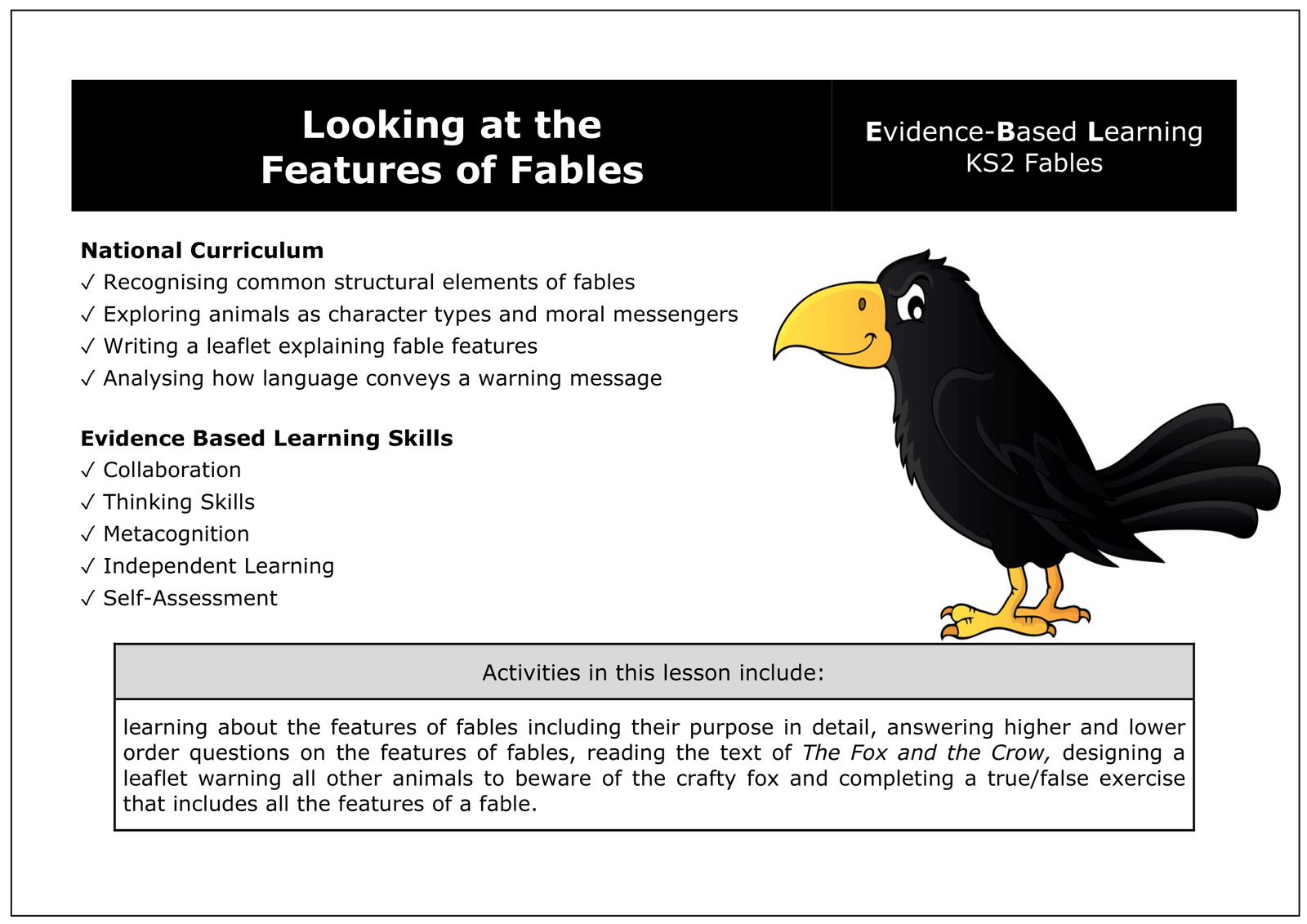
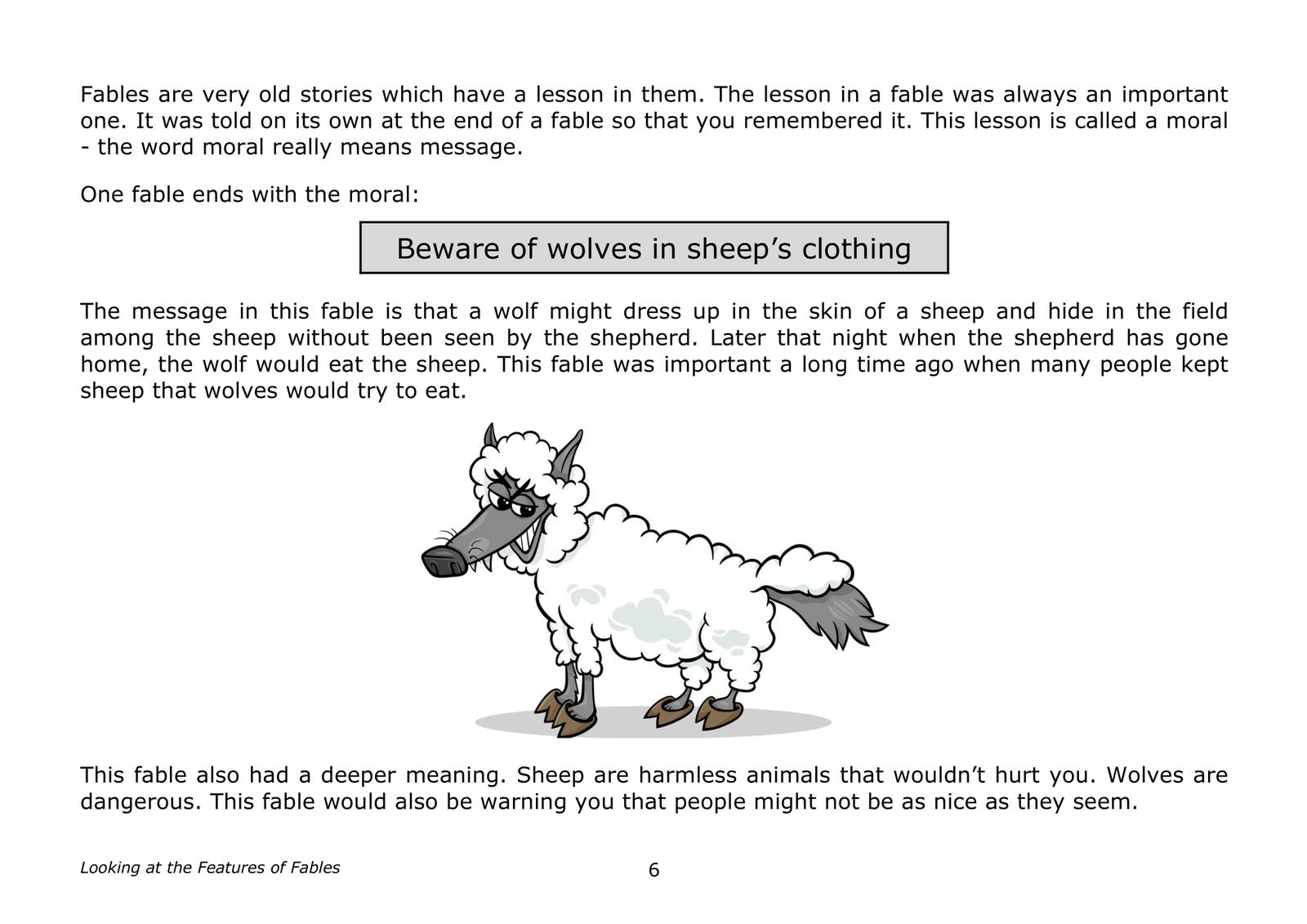


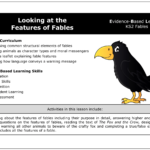
Philipem (verified owner) –
We asked a.i. to review this lesson. This is what it said: Teaching English and Evidence-Based Learning Skills Together in “Looking at the Features of Fables” lesson ⭐⭐⭐⭐⭐
I recently came across an excellent KS2 resource for teaching fables in a way that develops English skills alongside key evidence-based learning skills. This cleverly designed lesson looks at the key features of fables in detail while incorporating collaborative discussion, thinking skills questions, metacognition, independent learning, and self-assessment!
The lesson contains a variety of useful student activities:
✅ Learning about what fables are, their main features, purpose and morals
✅ Answering higher and lower order questions on fables
✅ Reading a fable text – The Fox and the Crow
✅ Creating a leaflet from the crow’s perspective to warn others about the crafty fox
✅ Completing a true/false comprehension activity
Importantly, five evidence-based learning skills are interwoven throughout the activities: collaboration, thinking skills, metacognition, independent learning and self-assessment. The star icons provide a helpful visual guide as to when pupils are using each key skill.
In addition, there is a 5 minute CPD activity for teachers on self-assessment. This consists of a research extract on the benefits of self-assessment for pupils, followed by an action step for teachers to create a before/after checklist to assess the impact of using self-assessment in their own class.
I would thoroughly recommend this resource for KS2 teachers. It’s ready to print out and use straight away or to use on any device whilst also expanding a teacher’s own knowledge of evidence-based practice. I’m giving it 5 stars for enabling the simultaneous development of English and learning skills in an engaging way. Why not give it a try in your classroom and assess the impact on your students?